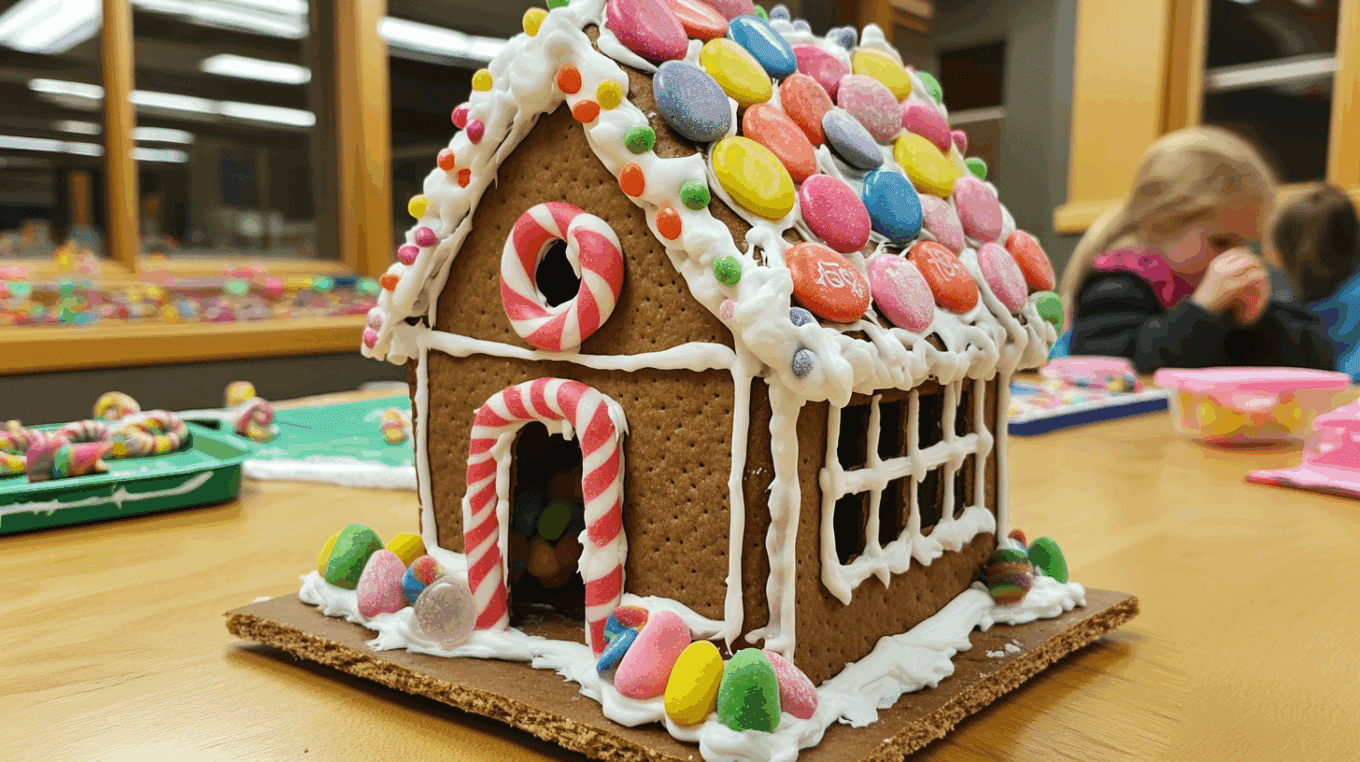Want to bring some holiday fun to your classroom? A school gingerbread house project is perfect! These sweet building projects keep kids busy and happy during the winter months.
In this guide, we’ll show you how to set up this activity for students of all ages. You’ll learn what supplies to gather, the steps to follow, and ways to ensure every child can join in—even those with food allergies.
We’ve got ideas for different grade levels, too, from simple designs for the little ones to complex structures for older kids.
Creating a school gingerbread house isn’t just fun; it helps students collaborate and utilize both math and art skills. Ready to create some sweet memories in your classroom?
Why Gingerbread Houses are Great for the Classroom
Gingerbread houses have been a holiday tradition since the 1800s, when families made them from cookies and sugar. These sweet buildings fit perfectly into winter school activities when students need indoor projects.
Making gingerbread houses helps kids learn to work together and share ideas. Students can utilize math skills to plan their design and art skills to make it visually appealing.
The activity allows each child to add their touch while working toward a common goal with classmates.
How to Make a School Gingerbread House?
Making a school gingerbread house is a fun activity for kids of all ages. This simple project uses common items and doesn’t need baking skills.
Supplies You’ll Need
Before you start building your school gingerbread house, gather all your materials. The items below are easy to find at grocery stores, or you might already have them at home. Having everything ready makes the project go smoothly.
- Milk cartons or small juice boxes
- Graham crackers
- Royal icing
- Paper plates or cardboard bases
- Assorted candy (gumdrops, mini marshmallows, M&Ms, candy canes, sprinkles, licorice)
- Cereal pieces (Cheerios, Froot Loops)
- Mini pretzel sticks or rods
- Ziploc bags or piping bags
- Aprons or smocks
- Wet wipes or paper towels
- Colored frosting
- Shredded coconut
Follow these steps to create a sweet mini school that looks great.
1. Prepare the Base and Structure
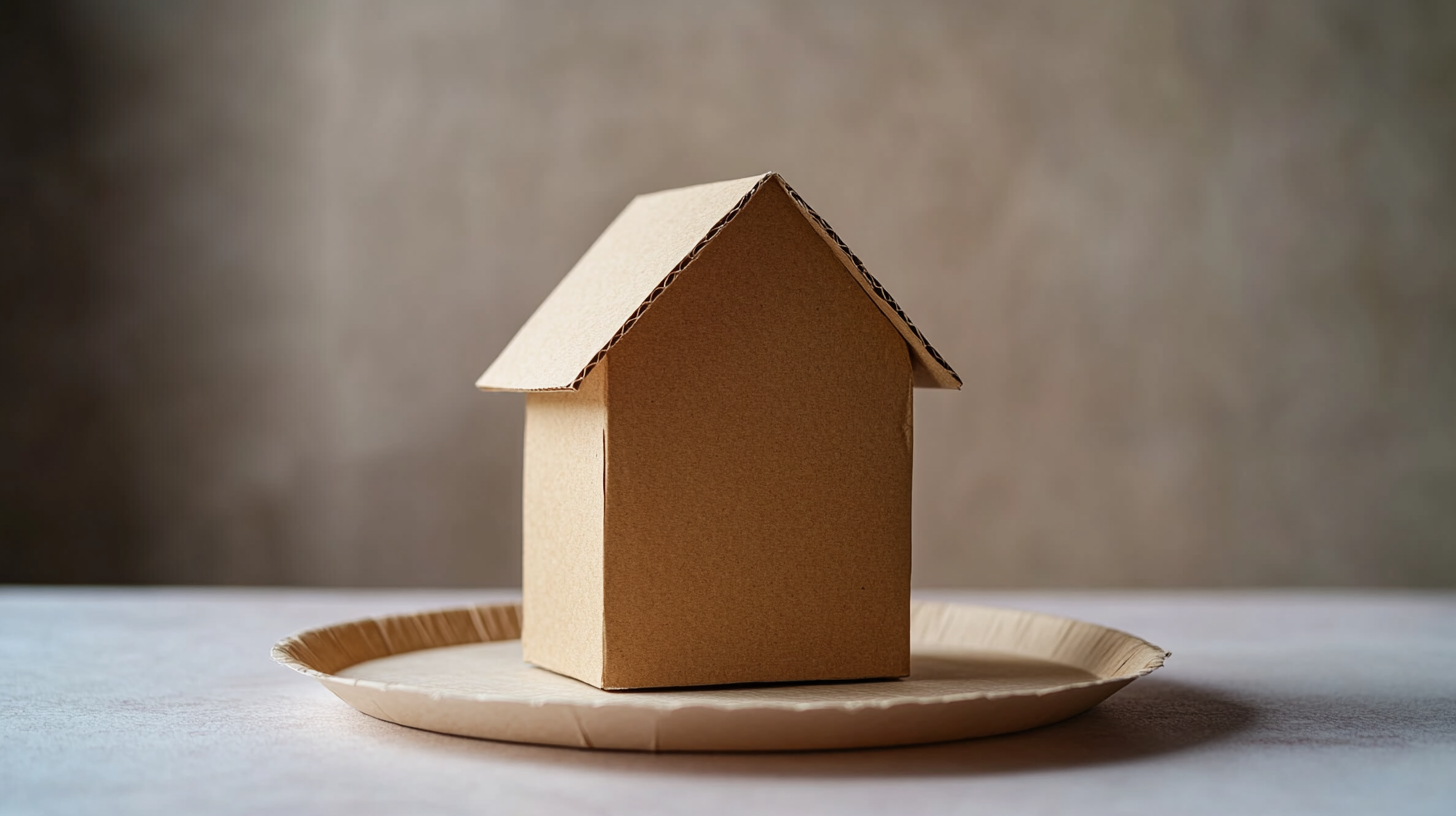
Put an empty milk carton on a paper plate. Make sure the carton is clean and dry. This will be the main part of your house. The carton gives your house a good shape and a strong base.
You can cut the top of the carton if needed to make it look more like a house. The paper plate helps catch any mess and makes it easy to move your house later.
Before you start, gather all your items so they’re within reach. This makes the whole process easier. You might want to cover your work area with paper or plastic to keep things clean. A milk carton works well because it stands up on its own.
2. Attach the Graham Crackers
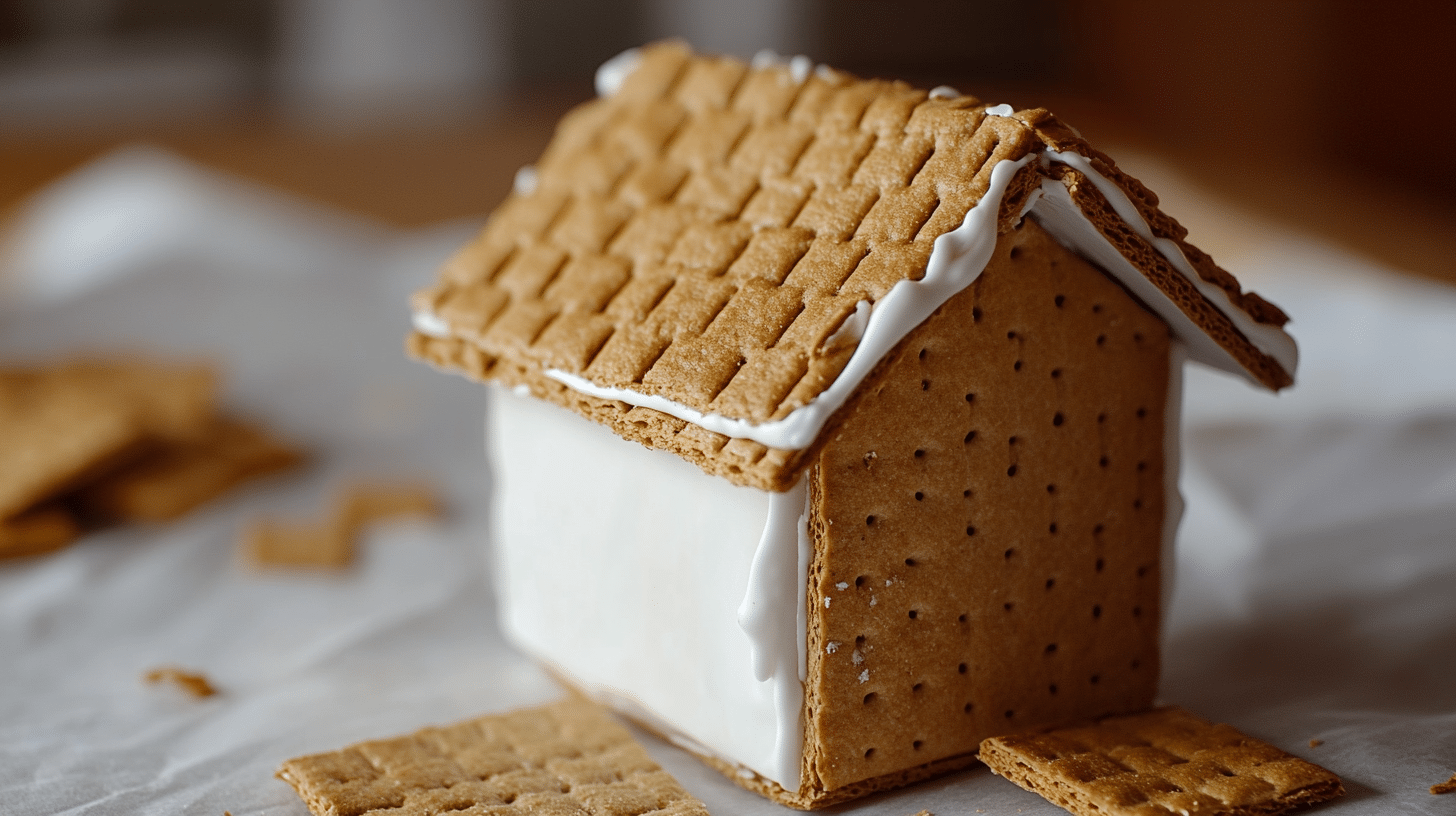
Spread royal icing on the sides of the milk carton. Think of the icing as glue that will hold everything together. Stick graham crackers onto the icing.
Cover all four sides of the carton with crackers. Add crackers to the top to make a roof shape. You may need to break some crackers to fit the right spots.
Hold each cracker in place for a few seconds so it stays put. Let the icing dry a bit before you add more crackers. Work on one side at a time. This step takes some time, so be patient. The end result will be worth it.
3. Add Frosting Details
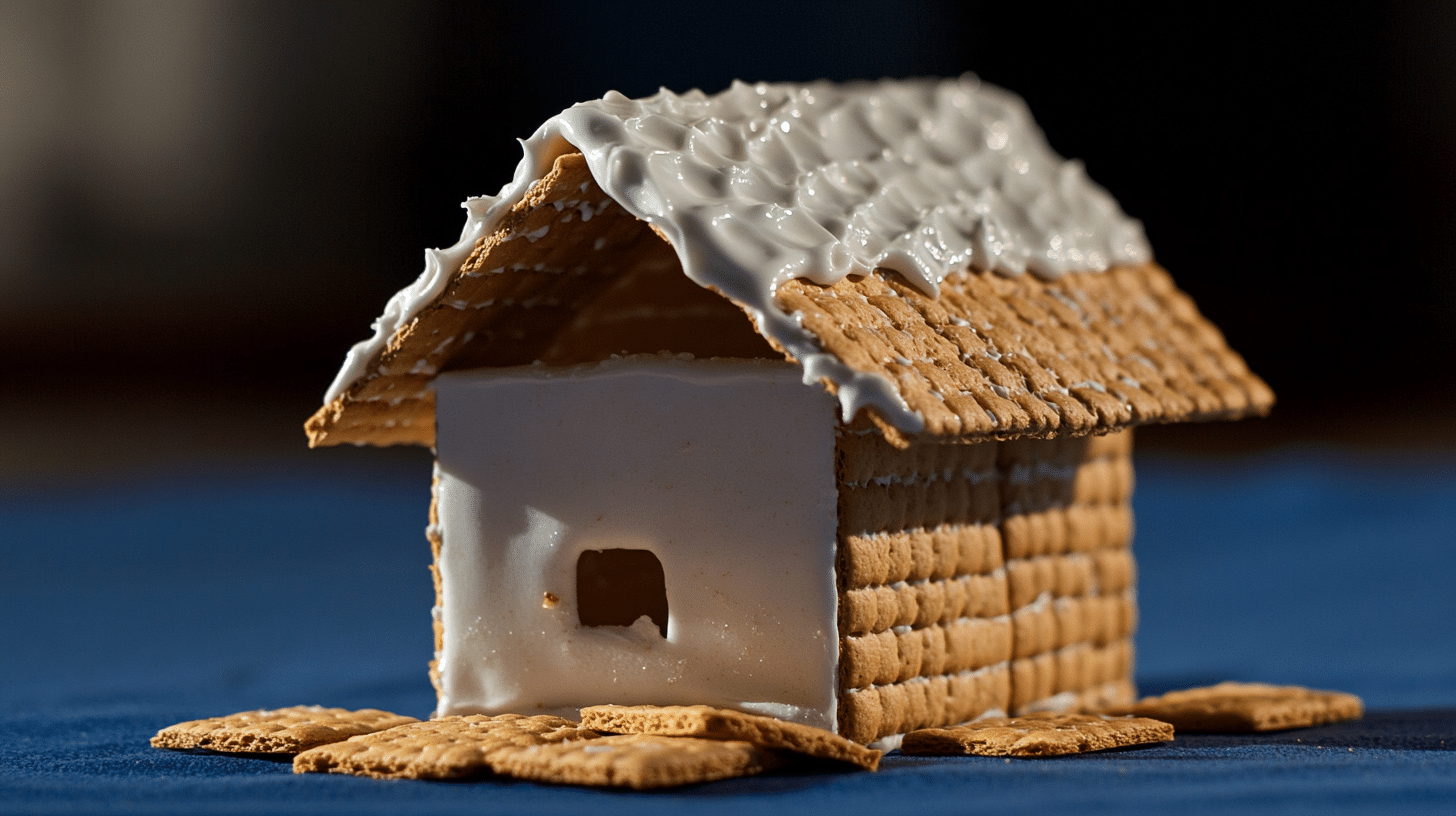
Put white frosting in a plastic bag. Cut a tiny hole in one corner to make a simple piping bag. Squeeze the bag gently to make lines of frosting along the edges of your house.
Add these lines where the roof meets the walls for a finished look. Make patterns on the walls if you want to get fancier. The frosting adds a snow-like look to your house and makes it more realistic.
It also hides any gaps between crackers. You can add extra frosting to spots that need more support. Try making swirls or zigzag patterns to add more style to your house.
4. Decorate with Candy
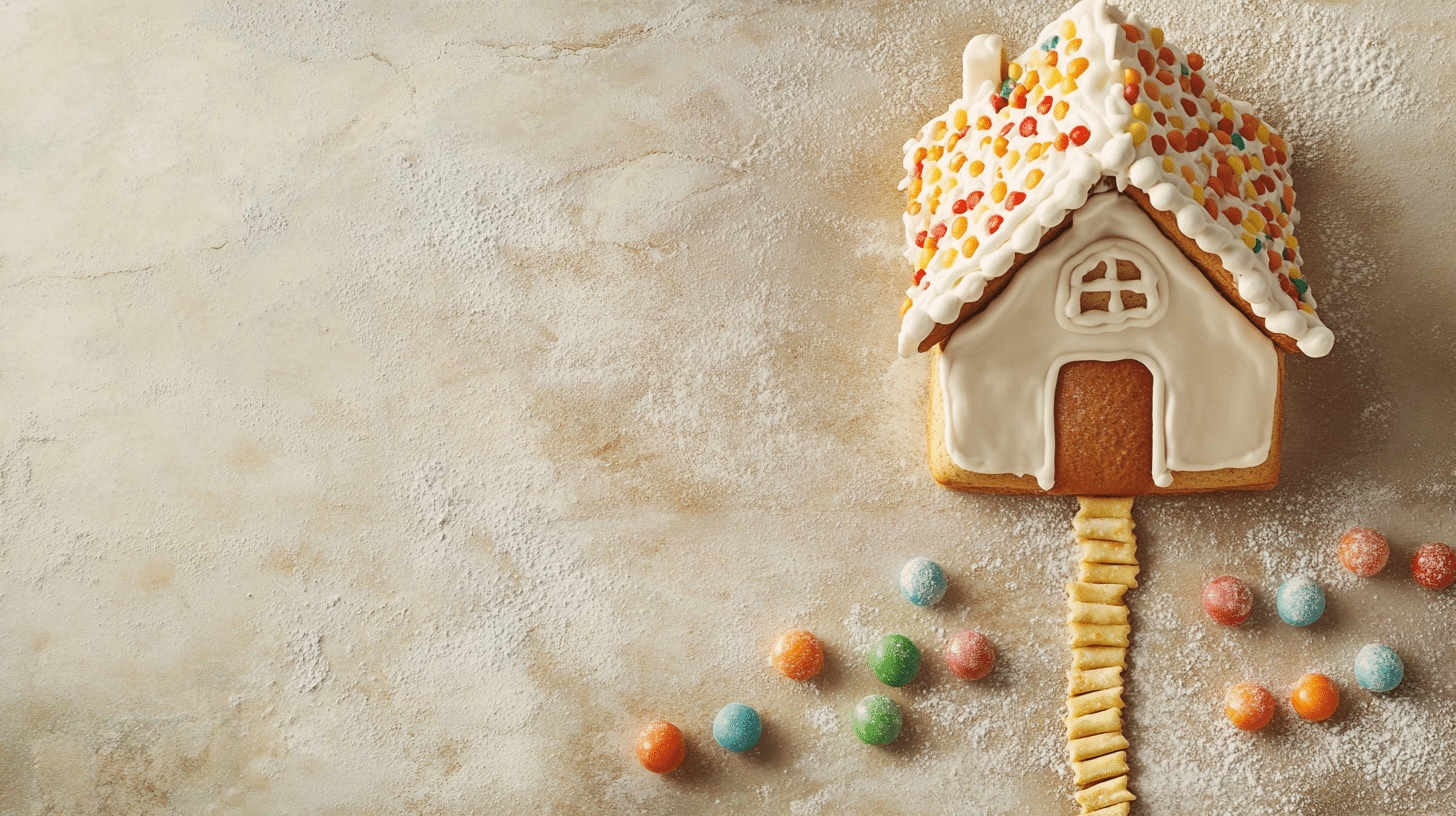
Use more royal icing to stick candy to your house. Make windows with square candies like small chocolate bars. Use a pretzel stick or rod for a door.
Add small round candies along the roof edge to look like lights. Try cereal pieces for roof tiles or textured walls. You can add a path made of small candies leading to the door.
Use different colors to make your house bright and happy. Green candies work well as plants or bushes near the house. Red candies can be flowers in your yard. Your house can be as plain or fancy as you want.
5. Clean Up and Display
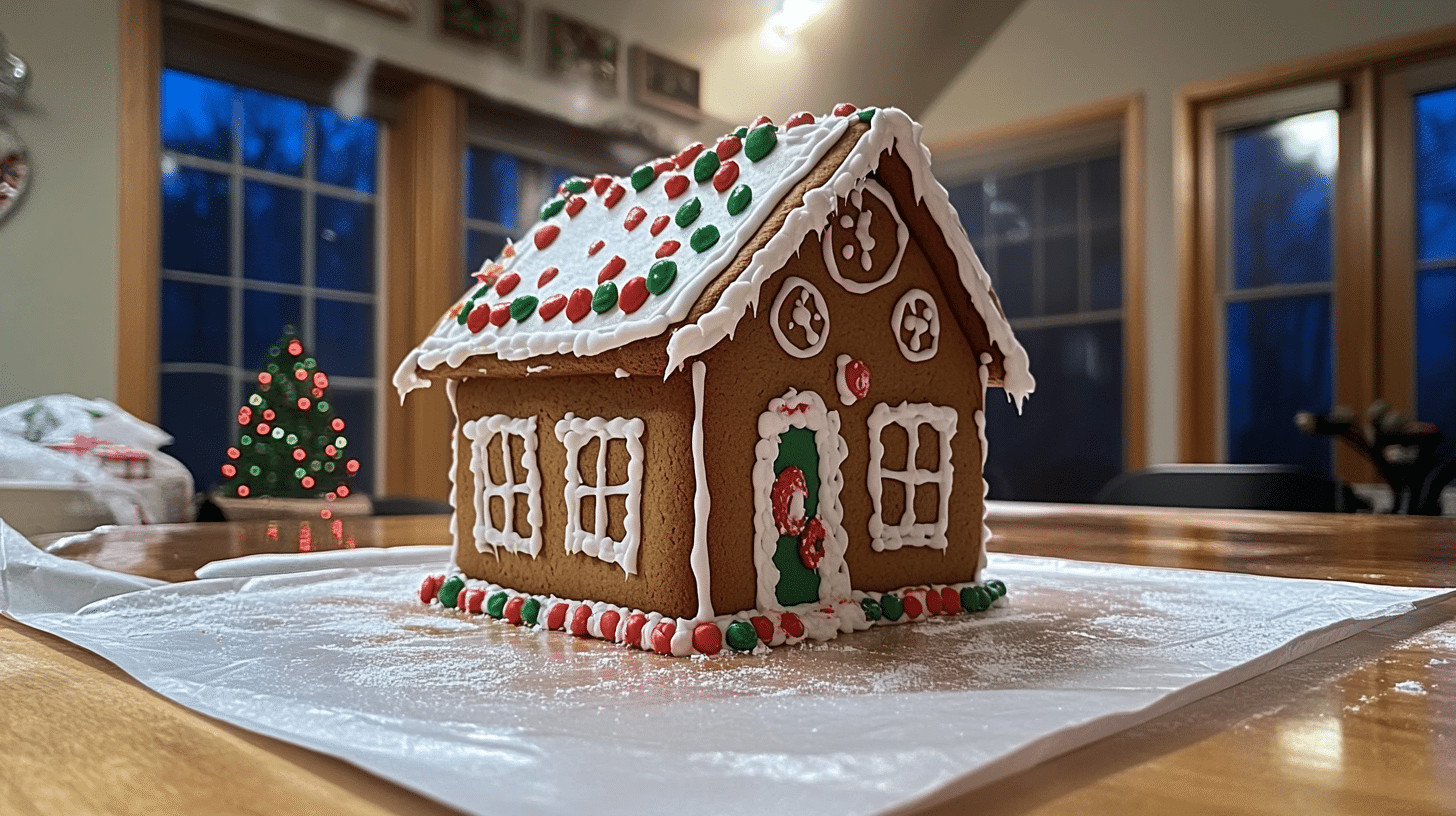
Wipe up any spills with a damp cloth. Let your house dry for at least an hour so everything stays in place. Take photos of your finished house from different angles to show all your hard work.
Put it somewhere everyone can see it, like the middle of the dining table or on a shelf. Share your work with family and friends who visit. Your house can be a nice table decoration during the holiday season.
The colors and design will bring joy to your home. You can keep it for days or weeks if stored in a dry place. Enjoy looking at your creation each day.
Gingerbread House: Allergy-Friendly Alternatives
When organizing a gingerbread house activity for your classroom, you need to think about students with food allergies. Some kids can’t eat regular graham crackers or certain candies. Planning ahead makes sure everyone can join in safely. Here are some options that work well for students with common food restrictions:
Gluten-free options: Use rice cereal treats or gluten-free graham crackers as building blocks for houses that everyone can handle.
Nut-free candies: Choose candies like Skittles, Starbursts, or gumdrops that don’t contain nuts and are safe for all students.
Safety Tips for Making Gingerbread Houses with Kids
Safety should be your top priority when making gingerbread houses with students. Taking a few steps ahead of time helps prevent problems. Here are some tips to keep everyone safe during this fun activity.
- Check for allergies before starting. Send a note home to parents listing all food items you plan to use.
- Use plastic knives or safety scissors for cutting. Show kids how to cut away from their bodies and watch younger ones closely.
- Keep small candies away from very young children who might put them in their mouths or noses.
- Have kids wash their hands before and after the activity. Keep wet wipes or a hand washing station nearby.
- Clean spills right away to prevent slips, especially with sticky icing on the floor.
Gingerbread House Ideas for Different Grade Levels
Breakdown of age-appropriate techniques and designs for Pre-K, elementary, and upper grades.
Pre-K
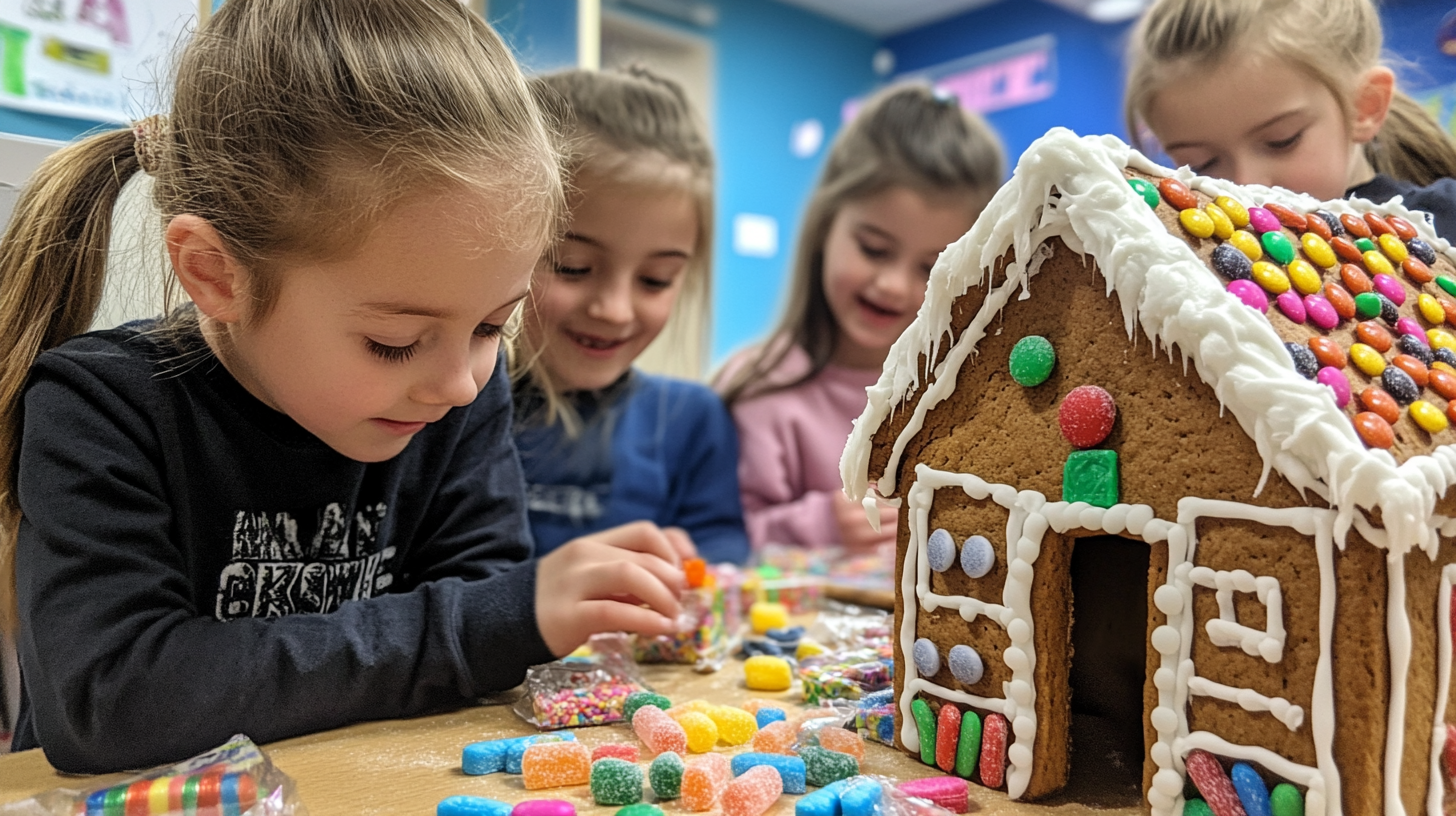
For the youngest students, keep it simple and fun. Use pre-made graham cracker panels and thick frosting. Let them focus on sticking candies onto the walls.
Big candies work best for small hands. Pre-cut the crackers and give each child a small plate as a base. Adult help is needed for frosting. Focus on the joy of creating rather than perfect houses.
Elementary
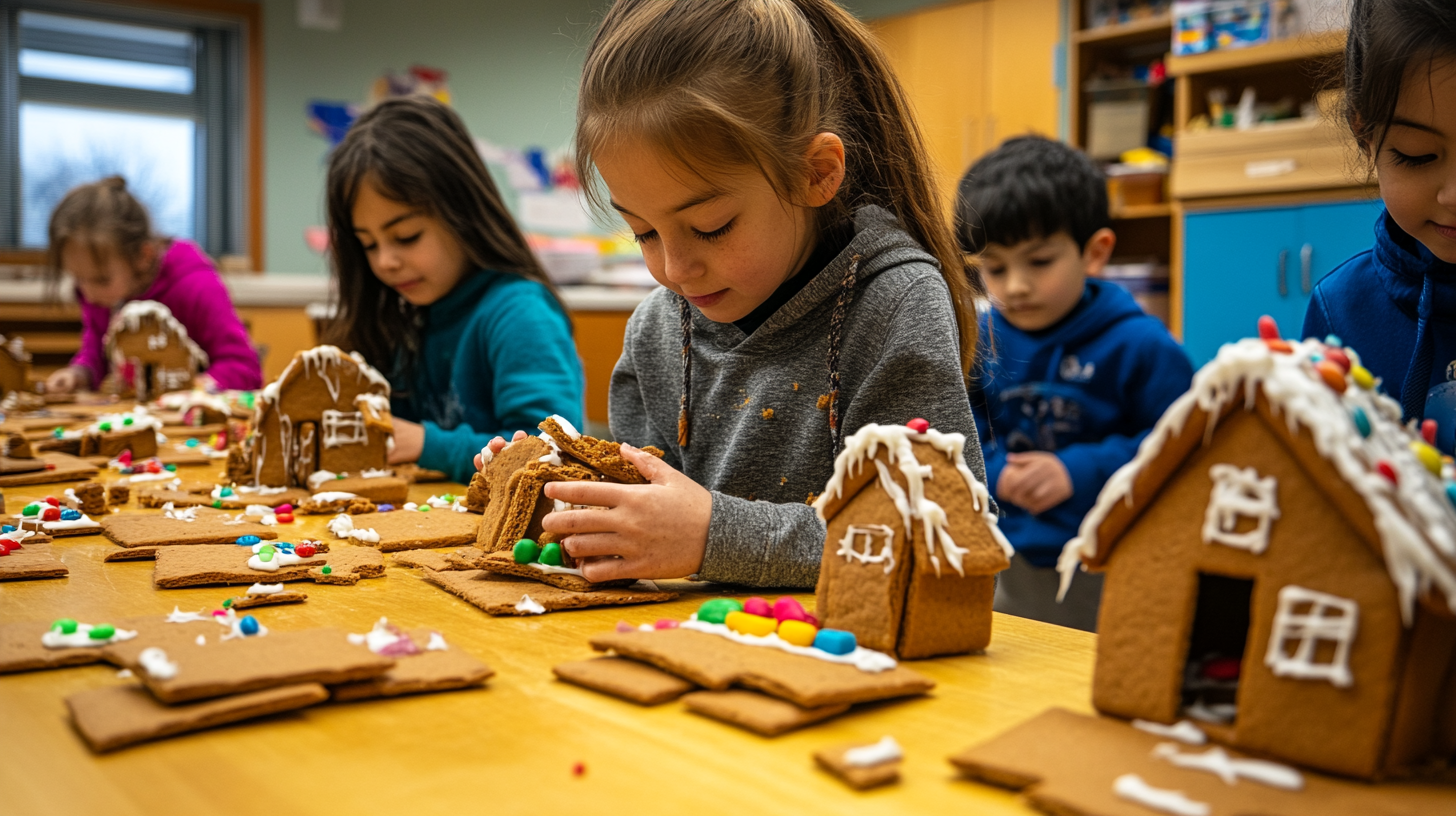
Elementary students can handle more steps with some help. They can build basic house shapes using Graham crackers and royal icing. Show them how to hold pieces together until dry.
Offer a mix of candy sizes for patterns and designs. Add paper cutouts for people or trees. Let them work in small groups to build larger houses.
Upper Grades
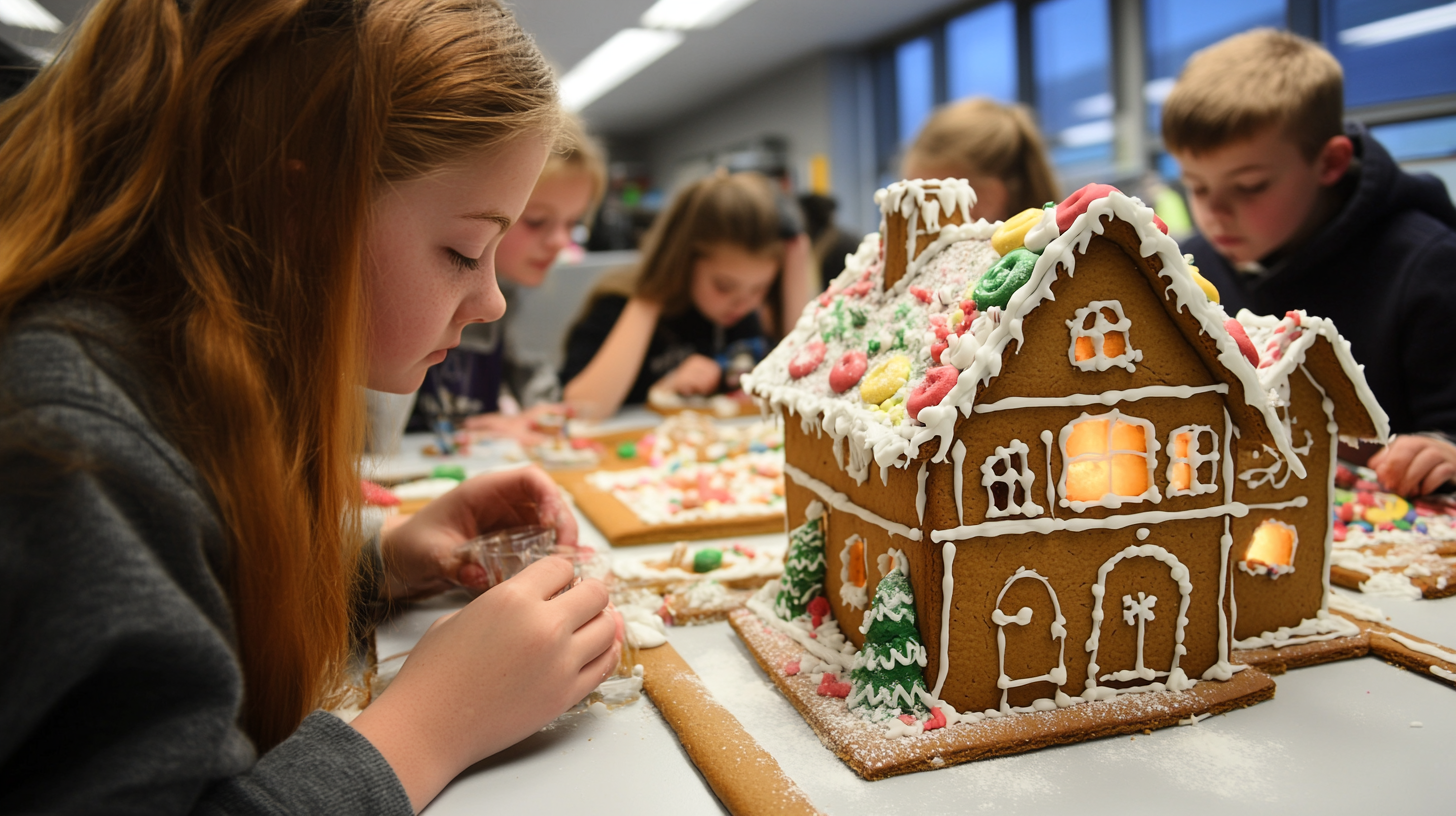
Older students can tackle more complex designs with multiple rooms or levels. They can plan their houses on paper first and measure the pieces.
Challenge them to make schools, churches, or barns instead of basic houses. They can use piping bags for detailed icing work. These students might enjoy a themed contest or adding electric tea lights for glowing windows.
Wrapping Up
Now you have all you need to start a school gingerbread house project! This activity brings joy while teaching important skills like teamwork and creativity.
Before you begin, check with parents about food allergies so everyone stays safe. Take photos of the finished houses to display in your classroom or school hallway.
You might even turn it into a yearly tradition that students look forward to each winter. The best part? These sweet buildings create lasting memories for your class.
Want to try something extra? Have students write stories about their gingerbread houses or hold a friendly contest with small prizes. Your school gingerbread house project will surely be a hit with students and parents alike!

